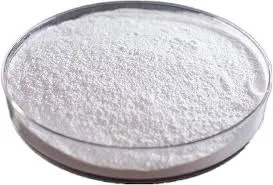
Nov . 28, 2024 10:12 Back to list
Methyl Hydroxyethyl Cellulose Applications and Benefits in Various Industries
Understanding Methyl Hydroxyethyl Cellulose Properties, Applications, and Benefits
Methyl Hydroxyethyl Cellulose (MHEC) is a non-ionic polymer derived from cellulose, a natural polymer obtained from the cell walls of plants. As an important additive in various industries, MHEC serves multiple functions due to its unique properties. This article aims to explore what MHEC is, its properties, applications, and benefits.
What is Methyl Hydroxyethyl Cellulose?
MHEC is a modified form of cellulose, where methyl and hydroxyethyl groups are introduced. This modification enhances the solubility and stability of cellulose, making it suitable for various applications that require thickening, binding, and film-forming properties. MHEC is known for its ability to dissolve in water and form viscous solutions, which can be crucial in numerous formulations.
Properties of MHEC
MHEC possesses several key properties that contribute to its functionality
1. Water Solubility MHEC readily dissolves in cold water, creating a stable solution that exhibits significant viscosity. This makes it a versatile thickening agent in many formulations.
2. Non-ionic Nature Unlike ionic polymers, MHEC does not experience significant changes in solubility with variations in pH or ionic strength. This property allows it to maintain stability in a range of conditions.
4. Film-Forming Ability When dried, MHEC forms a flexible and transparent film. This characteristic is essential in applications where coating or surface protection is required.
5. Synergistic Effects MHEC can interact with other additives, enhancing overall performance. For example, when used with other thickeners or stabilizers, it can improve texture and stability in formulations.
Applications of MHEC
The versatility of MHEC allows it to be used in various industries, including
1. Construction MHEC is widely used in cement-based products, such as tile adhesives, stuccos, and grouts. In these applications, it helps improve workability, open time, and water retention capacity, which are crucial for the adhesion and performance of construction materials.
mhec-methhyl hydroxyethyl cellulose

2. Food Industry MHEC is used as a thickening agent, stabilizer, and emulsifier in food products. Its non-toxic nature and ability to enhance texture make it suitable for various food formulations, including sauces, dressings, and dairy products.
3. Pharmaceuticals In the pharmaceutical industry, MHEC serves as a drug delivery agent, helping to control the release of active ingredients. It is also used in the formulation of gels and ointments due to its ability to provide a smooth texture.
4. Personal Care Products MHEC finds application in cosmetic formulations, such as lotions, creams, and shampoos. Its thickening and stabilizing properties contribute to the desired consistency and feel of personal care products.
5. Paints and Coatings In the paint industry, MHEC is utilized as a thickener and rheology modifier. It helps maintain the uniformity of paint, enhances application properties, and prevents sagging during application.
Benefits of MHEC
The incorporation of MHEC into various products offers numerous benefits
1. Enhanced Texture MHEC improves the mouthfeel and texture of food products, making them more appealing to consumers.
2. Improved Stability Adding MHEC strengthens the stability of emulsions and suspensions, reducing the risk of separation over time.
3. Extended Workability In construction applications, MHEC allows for longer work times, which helps contractors complete projects more efficiently.
4. Eco-Friendly As a cellulose-derived product, MHEC is considered biodegradable and environmentally friendly, aligning with the growing demand for sustainable products.
5. Versatility The multi-functional nature of MHEC enables its usage across various sectors, providing a cost-effective solution that meets diverse requirements.
Conclusion
Methyl Hydroxyethyl Cellulose is a significant additive that enhances the performance of various products across multiple industries. Its unique properties, such as water solubility, thermal stability, and film-forming ability, make it a valuable ingredient in formulations ranging from construction materials to food and personal care products. As demand for eco-friendly and versatile additives continues to rise, MHEC is poised to play an increasingly important role in shaping innovative products in the future.
-
Versatile Hpmc Uses in Different Industries
NewsJun.19,2025
-
Redispersible Powder's Role in Enhancing Durability of Construction Products
NewsJun.19,2025
-
Hydroxyethyl Cellulose Applications Driving Green Industrial Processes
NewsJun.19,2025
-
Exploring Different Redispersible Polymer Powder
NewsJun.19,2025
-
Choosing the Right Mortar Bonding Agent
NewsJun.19,2025
-
Applications and Significance of China Hpmc in Modern Industries
NewsJun.19,2025







